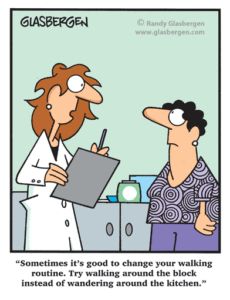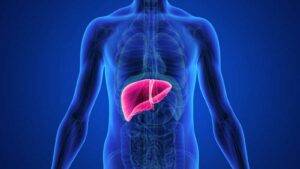In the realm of modern medicine, few pharmaceuticals have had the transformative impact that Metformin has had. Originally intended to combat diabetes, this remarkable drug has since found new applications, most notably in the treatment of Fatty Liver Disease. So, let’s journey through the intriguing history and development of Metformin, exploring its original purpose, motivations behind its creation, and the parties involved, all while delving into its specific application for Fatty Liver Disease.
From Diabetes to Fatty Liver Disease – A Fascinating Journey of a Pharmaceutical Marvel
Just a little heads up: some of the links on this site may be affiliate links, which means if you make a purchase through them, we might get a little kickback. But don’t worry, it won’t cost you a cent extra! Think of it as the universe secretly thanking us for helping you find a great deal. Your support keeps the good vibes flowing.
The Birth of Metformin:
Metformin can trace its roots back to the early 1920s when a group of French scientists discovered a compound derived from the plant Galega officinalis, commonly known as “Goat’s Rue.” These scientists realized that the compound, later named guanidine, could lower blood sugar levels. However, it was not until the 1950s that the pharmaceutical industry began to explore guanidine’s therapeutic potential.
The Fateful Collaboration:
Enter Jean Sterne, a renowned physician exploring the effects of guanidine derivatives, and Nathan S. Kaplan, a chemist working at the US Veterans Administration Hospital in Providence. Their partnership led to the development of a new class of drugs called Biguanides, with Metformin (dimethyl biguanide) emerging as the most promising candidate. Eventually, Metformin came under the purview of a British drug company, which recognized its potential in treating diabetes.
The Rise of Metformin in Diabetes Treatment:
Metformin was first approved for clinical use in the United Kingdom in 1958. Initially, it faced skepticism due to the side effects associated with its predecessors, but it quickly gained popularity for its efficacy in reducing blood glucose levels and improving insulin sensitivity. With time, Metformin became a first-line treatment for type 2 diabetes, and by 1994, the United States Food and Drug Administration (FDA) approved its use in the US.
Metformin’s Unexpected Application in Fatty Liver Disease:
Beyond its role in diabetes management, recent research has uncovered an intriguing link between Metformin and Fatty Liver Disease. Fatty Liver Disease encompasses a spectrum of conditions characterized by excessive fat accumulation in the liver, leading to potential liver damage. Though primarily associated with alcohol abuse, non-alcoholic fatty liver disease (NAFLD) is an emerging concern, often associated with obesity and metabolic syndrome.
In treating Fatty Liver Disease, Metformin has shown exceptional promise. It works by reducing insulin resistance, inhibiting liver gluconeogenesis (the production of glucose by the liver), and promoting the breakdown of fatty acids. These combined effects help reverse the fat buildup and improve liver health. The growing body of evidence suggests that Metformin may slow down disease progression, reduce inflammation, and even prevent liver fibrosis in some cases.
Effectiveness and Future Potential:
Clinical studies have demonstrated the beneficial impact of Metformin on Fatty Liver Disease, showing improvements in liver enzymes, liver fat content, and histological markers. While it is not yet approved by regulatory bodies specifically for this purpose, Metformin is increasingly being prescribed off-label for NAFLD management due to its potential benefits and low risk of adverse effects.
While I do cite reputable sources, I am not a medical professional. Please use professional medical advice when making any health-related decisions.
Conclusion:
As we dive into the riveting history of Metformin, it becomes evident that this pharmaceutical marvel’s evolutionary journey extends far beyond its original purpose in diabetes treatment. With its expanded application in Fatty Liver Disease, Metformin offers hope and relief to those struggling with this increasingly prevalent condition.
By reducing insulin resistance, promoting healthier metabolic functions, and fighting fatty liver accumulation, Metformin showcases its versatility and potential for impacting liver health. While further research and clinical trials are necessary to solidify its role, Metformin’s journey from diabetes treatment to improving liver health is a testament to the power of scientific advancements and innovative medications.
References:
1. French Sweet Gale (Galega officinalis): Traditional Use, Phytochemistry, and Pharmacology. URL: [https://pubmed.ncbi.nlm.nih.gov/33471672/]
2. The Discovery of Hepatic Glucose Output Inhibition by Metformin: The First of Three Biguanide Discoveries. URL: [https://diabetes.diabetesjournals.org/content/62/12/3995]
3. Metformin: From Mechanisms of Action to Therapies. URL: [https://www.ncbi.nlm.nih.gov/pmc/articles/PMC3112078/]
4. Nonalcoholic Fatty Liver Disease (NAFLD) – Symptoms and Causes. URL: [https://www.mayoclinic.org/diseases-conditions/nonalcoholic-fatty-liver-disease/symptoms-causes/syc-20354567]
5. Metformin for nonalcoholic fatty liver disease: A systematic review and meta-analysis. URL: [https://www.ncbi.nlm.nih.gov/pmc/articles/PMC7986368/]
6. Metformin in non-alcoholic fatty liver disease: A systematic review and meta-analysis. URL: [https://pubmed.ncbi.nlm.nih.gov/32475716/]
Metformin, pharmaceutical history, development, diabetes, fatty liver disease, treatment, effectiveness, liver health, insulin resistance, glucose metabolism, hepatology, drug discovery, Biguanides, liver therapies, medical breakthroughs, scientific advancements, liver disease treatment, innovative medications, digital health, liver health awareness, non-alcoholic fatty liver disease, NAFLD, medication research, dimethylbiguanide, dimethyl biguanide

Just a little heads up: some of the links on this site may be affiliate links, which means if you make a purchase through them, we might get a little kickback. But don’t worry, it won’t cost you a cent extra! Think of it as the universe secretly thanking us for helping you find a great deal. Your support keeps the good vibes flowing.
































































































